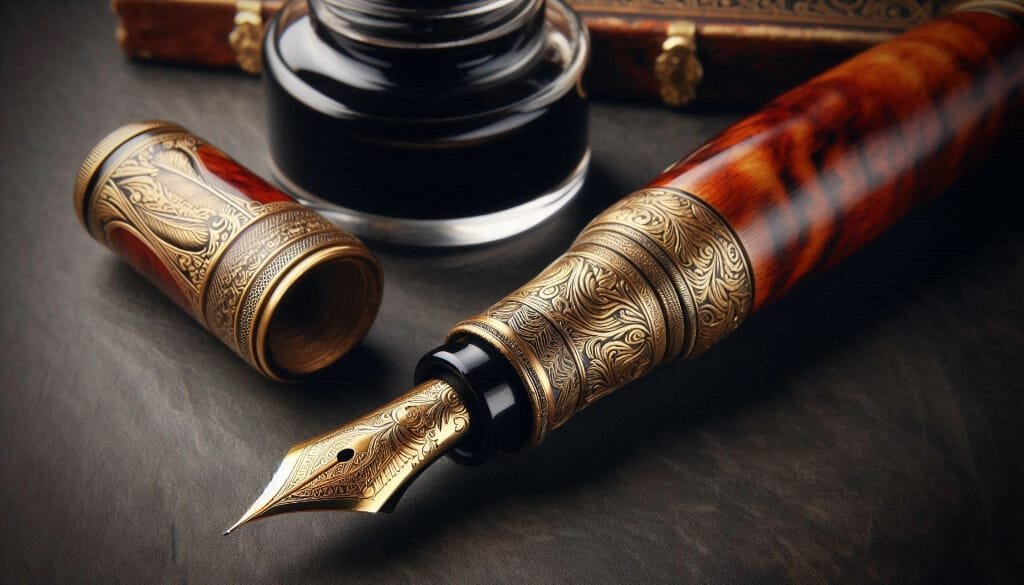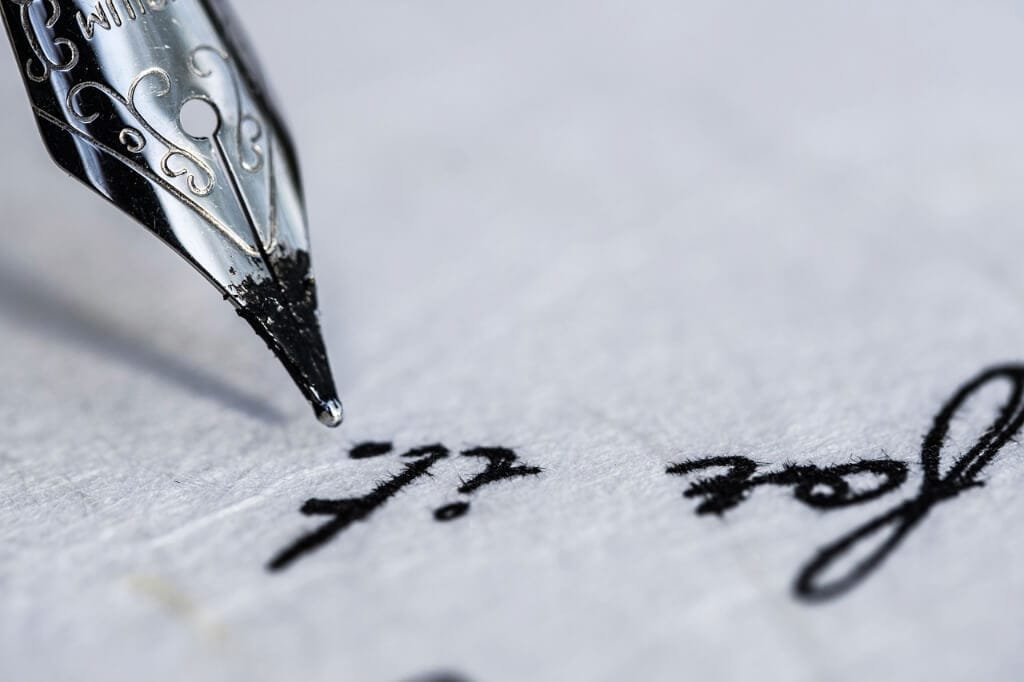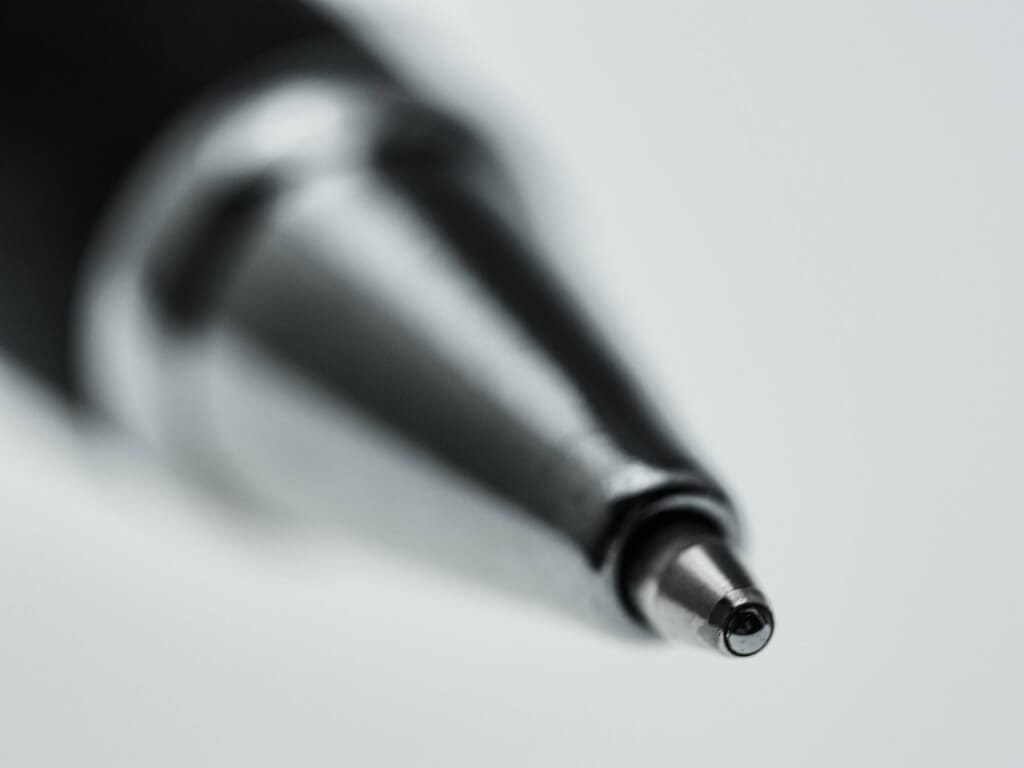Writing has been an essential part of human civilization, shaping our communication, culture, and knowledge. From the earliest cave drawings to the sophisticated digital scripts of today, the evolution of writing tools has been a fascinating journey. One pivotal development in this journey is the invention of the pen, which transformed how we record and share information. In this article, we will delve into the history of the pen, exploring its origins, key innovations, and the individuals who played crucial roles in its development. By tracing the evolution of this indispensable tool, we aim to uncover who invented the pen for the first time in the world.

The Predecessors Of The Pen
Before the invention of the pen, as we know it, early humans used a variety of primitive tools for writing and communication. The journey began with simple implements like sticks, bones, and reeds, which were used to create symbols and images on natural surfaces such as rocks, clay, and tree bark. In ancient Mesopotamia, the cuneiform script was one of the earliest forms of writing, crafted by pressing a stylus—a pointed tool made from reed or bone—into soft clay tablets. This marked a significant step towards more complex written communication.
Similarly, the ancient Greeks and Romans used a stylus to etch letters onto wax-coated wooden tablets, which could be smoothed over and reused. These early writing methods served practical purposes, such as record-keeping and religious inscriptions, paving the way for more sophisticated tools. Quills, derived from bird feathers, became the standard writing instrument during the medieval period. They offered a greater degree of control and fluidity, allowing for the elegant, flowing scripts seen in illuminated manuscripts. The evolution from these basic tools to the refined quill highlights the human drive to improve the efficiency and aesthetics of writing, ultimately setting the stage for the invention of the oldest pen technologies.
Early Writing Tools
In ancient times, writing began with simple tools such as sticks, bones, and reeds. These primitive instruments were used to inscribe symbols and images onto surfaces like clay tablets and stone. In Mesopotamia, the cuneiform script was created using a stylus to press wedge-shaped marks into wet clay. This early form of writing was instrumental in the development of complex societies.
Stylus And Wax Tablets
In ancient Greece and Rome, the stylus became a popular writing instrument. Made of metal or bone, the stylus was used to scratch letters onto wax-coated wooden tablets. These tablets could be easily erased and reused, making them practical for note-taking and record-keeping. Although not a pen, the stylus was a significant step towards the invention of more advanced writing tools.
Quills: A Step Closer To The Pen
The quill, derived from bird feathers, represents a crucial advancement in writing technology. Used predominantly in the medieval period, quills provided a more refined writing experience compared to their predecessors. The process of preparing a quill involved trimming and shaping the feather to create a nib capable of holding and releasing ink. This innovation laid the groundwork for the modern pen.
The First Known Pens In History
As writing technology continued to evolve, so did the tools used for writing. The earliest known pens date back to ancient civilizations, where they represented significant advancements in writing technology. One of the oldest pen inventions was the reed pen, commonly used in ancient Egypt. Crafted from a hollow reed, this pen featured a split tip that could hold and release ink, allowing scribes to write on papyrus, the precursor to modern paper. The reed pen was instrumental in documenting religious texts, administrative records, and literary works, making it a cornerstone of Egyptian society.
In parallel, ancient Chinese writers developed the bamboo pen, another early writing instrument. The bamboo pen was fashioned from bamboo stalks, with a sharpened end that could absorb and transfer ink onto silk or bamboo slips. Both the reed pen and the bamboo pen shared the common goal of improving the accuracy and efficiency of writing, facilitating the preservation of knowledge and cultural expression. These ancient pens were more than just tools; they were vehicles for the transmission of ideas and beliefs, demonstrating the enduring human desire to communicate and record experiences. Their invention laid the groundwork for the evolution of more sophisticated writing instruments that would follow in the centuries to come.
The Reed Pen
One of the oldest pen inventions, the reed pen, emerged in ancient Egypt. Made from a hollow reed, this pen was used to write on papyrus, an early form of paper. The reed pen’s design allowed for a more controlled flow of ink and a finer writing line compared to earlier tools. Its use in recording important documents and literature highlights its significance in ancient civilizations.
The Bamboo Pen
In ancient China, the bamboo pen further advanced the technology of writing instruments. Bamboo was chosen for its availability and flexibility. The bamboo pen was used to write on silk and bamboo slips, reflecting the cultural importance of writing in Chinese society. This pen represents an early example of adapting natural materials to enhance writing practices.

The Advent Of The Dip Pen
As the need for more practical writing instruments grew, the dip pen emerged as a significant innovation. The development of the dip pen marked a significant turning point in the history of writing instruments, bridging the gap between the ancient quill and the modern fountain pen. Unlike quills, which were fragile and required frequent sharpening, the dip pen utilized a metal nib that was both durable and capable of creating finer, more consistent lines. These pens featured nibs made from materials such as steel, bronze, or brass, which were fitted onto a handle or holder.
The dip pen’s design allowed it to be dipped into an inkwell to draw up ink, which would then flow smoothly onto the writing surface through the slit in the nib. This innovation not only provided greater control over the quality of writing but also reduced the interruptions caused by constantly dipping a quill into ink. The dip pen’s popularity surged in Europe during the 17th and 18th centuries, coinciding with the rise of literacy and the demand for efficient writing tools. The introduction of mass-produced steel nibs in the 19th century made dip pens more affordable and accessible to a broader audience, including students, clerks, and writers. As a result, dip pens became a staple in offices, schools, and homes, paving the way for the subsequent development of self-contained ink pens, such as the fountain pen.
Origins And Development
The dip pen, featuring a metal nib, marked a departure from the quill. The metal nib could be dipped into an ink pot, allowing for a more consistent and reliable ink flow. This design also made the dip pen more durable and less prone to splitting compared to quills. The dip pen became popular in Europe during the 17th and 18th centuries, revolutionizing writing practices.
Invention And Adoption
Early dip pens were crafted from various metals and featured different nib shapes to suit different writing styles. Innovators of the time experimented with materials and designs to improve functionality. The dip pen’s adoption was widespread, contributing to a surge in literacy and documentation across Europe and beyond.
Advantages Over Previous Writing Instruments
The dip pen’s advantages over previous writing tools were clear. Its durability, ease of use, and ability to produce finer lines made it a preferred choice for writers and scribes. The dip pen’s impact on writing and record-keeping was profound, influencing everything from literature to administrative documentation.
The Birth Of The Fountain Pen
The quest for a more convenient writing tool led to the invention of the fountain pen, a breakthrough in writing technology. The invention of the fountain pen was driven by the desire for a more efficient, less messy writing tool that could eliminate the need for constant dipping into an inkwell. Early attempts at creating a self-contained pen with an ink reservoir date back to the 10th century, but it wasn’t until the 19th century that the fountain pen, as we know it today, began to take shape. One of the first successful designs was patented by Romanian inventor Petrache Poenaru in 1827, featuring a quill barrel and a piston mechanism to regulate ink flow. However, it was Lewis Edson Waterman, an American insurance salesman, who revolutionized the fountain pen industry in 1884 by creating a more reliable version with a capillary feed system.
Waterman’s design featured a three-channel ink feed, which controlled the flow of ink to the nib and prevented leaks and spills, making it a practical tool for everyday writing. The fountain pen quickly gained popularity due to its convenience, elegance, and the smoother writing experience it offered compared to dip pens. Over time, manufacturers introduced various filling mechanisms, such as lever-fill, button-fill, and cartridge systems, which further enhanced the usability and appeal of fountain pens. This innovation not only catered to the needs of professionals and scholars but also contributed to the broader accessibility of writing tools, making writing a more seamless and enjoyable experience for people around the world.

The Need For A Self-Contained Ink Source
The dip pen, while effective, required frequent dipping into ink pots, which could be cumbersome. The need for a more convenient and efficient writing instrument led to the development of the fountain pen, which featured a self-contained ink reservoir. This innovation promised a more continuous and hassle-free writing experience.
Key Inventors And Patents
Petrache Poenaru, a Romanian inventor, is credited with the first fountain pen patent in 1827. His design included a piston mechanism to regulate ink flow. Later, in 1884, Lewis Waterman improved upon Poenaru’s design, creating a fountain pen with a more reliable ink-feed system. Waterman’s enhancements made the fountain pen more practical and popular, cementing his place in the history of writing instruments.
Evolution And Popularization
The fountain pen continued to evolve throughout the 19th and 20th centuries. Manufacturers introduced various improvements, such as different nib styles and filling mechanisms. The widespread availability of fountain pens transformed writing practices, making them accessible to people across the globe and solidifying their place as a staple writing tool.
The Invention Of The Ballpoint Pen
The ballpoint pen represents a significant leap forward in writing technology, offering a practical and reliable alternative to fountain pens. The ballpoint pen represented a major leap in writing technology, offering a solution to the issues of ink blots and inconsistent flow associated with fountain pens. The concept of a ballpoint mechanism was conceived in the early 20th century by Hungarian inventors László Biro and György Biro. Frustrated by the frequent smudging and drying problems of fountain pens, they envisioned a pen with a tiny rotating ball bearing at the tip, which would dispense ink evenly as the pen moved across the page. The ballpoint pen’s design involved a small metal ball encased in a socket, which rotated with the movement of the pen and drew ink from an internal reservoir.
This innovative mechanism provided a smoother, more controlled writing experience and eliminated the need for constant refilling. In 1938, the Biro brothers secured a patent for their design, and the pen quickly gained popularity for its reliability and convenience. The ballpoint pen’s commercial success was further bolstered by its affordability and ease of use, making it accessible to a wide audience. Its impact on writing practices was profound, as it became the preferred choice for everyday writing, from school notes to official documents. The ballpoint pen’s invention not only transformed the writing experience but also marked a significant milestone in the ongoing evolution of writing instruments.
Introduction To Ballpoint Technology
The ballpoint pen operates on the principle of a tiny ball bearing housed in the pen’s tip. This ball rotates as the pen moves, allowing ink to flow evenly onto the paper. The technology behind the ballpoint pen addressed many of the limitations of previous writing instruments, including issues with ink blots and inconsistent flow.

The Biro Brothers: László And György Biro
László and György Biro, Hungarian inventors, are credited with the successful development and commercialization of the ballpoint pen. Their innovation in 1938 introduced a more reliable and practical writing tool. The ballpoint pen’s design allowed for smooth and uninterrupted writing, which quickly gained popularity.
Commercial Success And Impact
The ballpoint pen’s mass production and affordability made it accessible to a wide audience. Its success marked a turning point in writing technology, as the ballpoint pen became the preferred choice for everyday use. The widespread adoption of the ballpoint pen has had a lasting impact on how people write and record information.
The Role Of The Pen In Modern Times
Despite the rise of digital technology, the pen remains a significant tool in our daily lives. In the digital age, where typing and touchscreen technology dominate, the pen continues to hold a unique and valued place in both professional and personal realms. Despite the proliferation of digital communication tools, the pen remains a cherished instrument for many reasons. In educational settings, students and educators often find that writing by hand enhances cognitive processes, aids in memorization, and fosters creativity. The tactile experience of using a pen allows for a personal connection to the written word that digital devices can’t replicate.
In the business world, pens are still widely used for signing contracts, taking notes during meetings, and crafting handwritten correspondence, which adds a personal touch to professional interactions. Additionally, the pen has maintained its status as a symbol of tradition and luxury, with high-end pens serving as coveted collectibles and gifts that signify sophistication and appreciation. Collectors and enthusiasts value these pens not just for their functionality, but for their craftsmanship and the prestige associated with their brands. The pen’s enduring appeal is a testament to its ability to adapt to changing times while preserving its essential role in human communication and expression. Its legacy continues to evolve, bridging the gap between traditional writing practices and modern conveniences.
Transition To The Digital Age
The advent of computers and smartphones has transformed many aspects of communication and documentation. However, the pen continues to hold relevance, especially in educational settings, business, and creative endeavors. The tactile experience of writing with a pen remains valued by many individuals.
The Pen As A Symbol Of Culture And Tradition
Pens are not only functional but also symbolic. They are often associated with important milestones, such as graduation, professional achievements, and artistic endeavors. Collectible and luxury pens have also become a niche market, reflecting the pen’s enduring cultural significance.
Final Thoughts
The journey of the pen from its ancient origins to the modern-day highlights the ingenuity and creativity of those who sought to improve our ability to communicate. From the reed pen to the ballpoint pen, each innovation has played a crucial role in shaping how we write and record information. The oldest pen invention laid the foundation for subsequent advancements, leading to the diverse range of writing tools we use today.
As we look to the future, the pen will likely continue to evolve, adapting to new technologies and changing needs. Its legacy as a fundamental tool in human history is secure, and its impact on communication and culture will be felt for generations to come.
FAQs
Who Was The First To Use A Pen?
The earliest forms of pens were used by ancient civilizations, such as the Egyptians with their reed pens, and the Chinese with bamboo pens. These early pens were used for writing on materials like papyrus and silk.
What Was The First Pen Made Of?
The first pens were made from natural materials such as reeds and bamboo. These early pens were used to write on papyrus, clay tablets, and silk.
How Did The Invention Of The Pen Change Writing Practices?
The invention of the pen revolutionized writing by providing a more reliable and convenient tool for recording information. It replaced earlier methods such as quills and styluses, leading to increased literacy and documentation.
